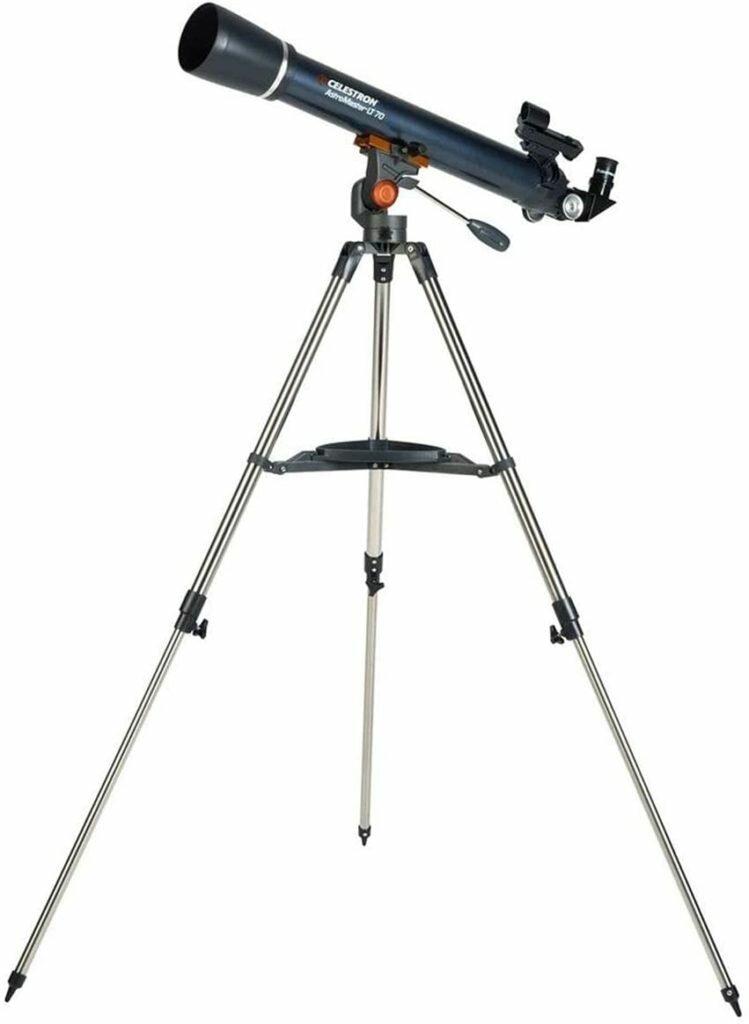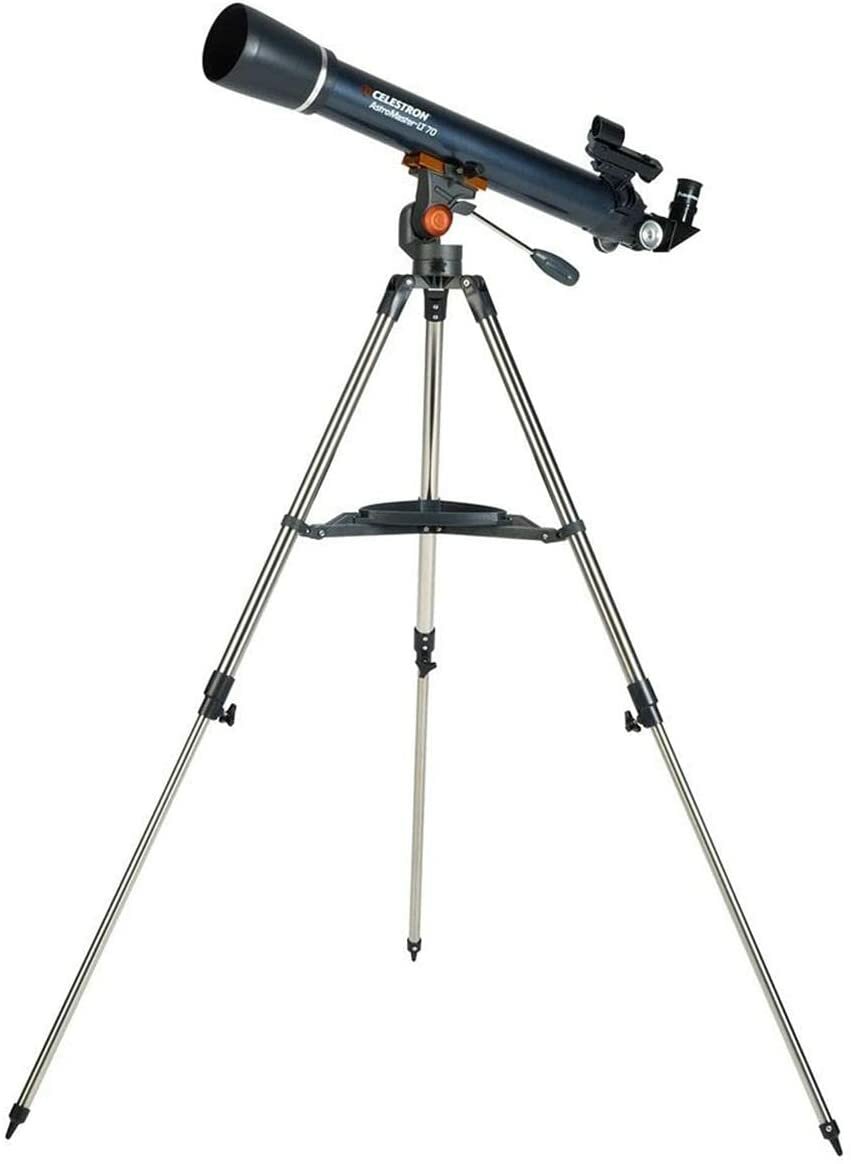Cheap telescope to see planets - What is the price of a decent telescope? This is a question that's been asked quite a lot . Today, cheap, affordable, and inexpensive telescopes are widely available, undoubtedly as a result of the recent growth in amateur astronomy.
A less expensive telescope, however, doesn't necessarily imply you won't be able to see lovely scenery of the Moon, stars, planets and deep-sky objects such as nebulae and galaxies. This is similar to the idea that a decent telescope isn't always pricey.
No matter the cost, a good telescope is still a good telescope. It can be challenging to sort through all the many brand names, types of telescopes, and if you're getting excellent value for your money if you're just beginning astronomy and have a limited budget.
The cheap telescopes to see planets that we've tested over time are listed below.
Omegon Maksutov Telescope MightyMak 60 - Cheap telescope to see planets


The Omegon Maksutov Telescope MightyMak 60 checks a lot of boxes for a flexible, attractive, and ultra-portable system, but its optics could be improved.
For beginning astronomers, the very first telescope must be inexpensive and easy to assemble, and the chosen kit must be fun to use. These are challenging qualities to balance, but Omegon's MightyMak 60 makes a valiant effort to provide all three.
The MightyMak 60 has two mount options, a table-top tripod and a tiny Dobsonian mount, which seems to impress many.
The MightyMak, a red dot finder, an eyepiece and a star diagonal are all included in the elegant carry pouch that the tripod comes in. Even yet, the bag is extremely lightweight and little larger than a typical wash bag. There is no way that this telescope will clog up the space where it is kept.
The major components have a clever overall design and seem to be nicely manufactured. For instance, the tripod and all of the mounting positions on the tube are made of metal, and the Dobsonian mount feels sturdy. Each mount is very stable for its size. At this price point, plastic accessories are to be anticipated.
It couldn't be simpler to set up the MightyMak: simply attach the tube to one of the mounts using the Vixen dovetail, insert the finder, diagonal, and eyepiece, and you are all set.
The instruction manual gives beginners straightforward information if there are any questions. We thought the Dobsonian mount, which is more adaptable for observing overhead objects, is better suited for stargazing than the other two mounts.
However, the table-top tripod is a good, portable choice if you're walking to a dark-sky location because it fits neatly into the bag.
The Maksutov design
Because of its compact optical system and Maksutov-Cassegrain design, Omegon's little Dobsonian telescope has a greater focal length than a typical Newtonian tabletop telescope with the same aperture.
In fact, the MightyMak 60 allows novice users access to a powerful 700mm focal length with a 200mm long aluminum tube. The fact that the telescope, tripod, and supplies can all pack into a carry bag little bigger than a shoebox is astounding and goes beyond the notion of portable, even though this focal length is a little shorter than that of other Maksutovs with comparable aperture.
Vital statistics
- 60mm Maksutov-Cassegrain optical system
- 700 mm focal length
- Focal ratio f/11.7
- Tabletop or single-arm Mount Dobsonian tripod
- Extras Star diagonal, 25mm 1.25-inch eyepiece, red dot finder, and carry bag
Amazon Link: https://us.amazon.com/Omegon-Maksutov-Telescope-MightyMak-60/dp/B014NLASU8
Celestron – AstroMaster LT 70AZ


The StarSense Explorer LT 70AZ is an intuitive, smartphone app-enabled telescope that outperforms its price range.
Small telescopes frequently have a bad rap, perhaps for having poor light capture and offering poor viewing of the night sky. My personal experience suggests contrary, as I was able to locate up to 70 of the familiar Messier deep-sky objects when I first started my astronomy journey using a 60mm refractor.
We tackled the new StarSense Explorer line keeping in mind that these telescopes won't provide a "Hubble vision," with our assessment focusing on the first and smallest model, the LT 70AZ.
The LT 70AZ is a refractor telescope with a 700 mm focal length and a 70 mm diameter front objective lens with completely coated optics, giving it an f/10 focal ratio.
The basic altaz fork mount holds the robust, lightweight aluminum tube in place. A slow-motion control allows for precise altitude adjustment, while a thumbscrew allows for more general adjustments.
Cheap telescope to see planets
Another thumbscrew is used to change azimuth, although there isn't fine adjustment. In fact, we were able to adjust the azimuth without a need for one. A simple rack and pinion focuser that can accommodate 1.25-inch format accessories and is used for focusing.
Two 25mm and 10mm eyepieces, an erect image star diagonal and a 2x Barlow lens are included with the telescope. The setup is completed with a straightforward red dot finder and tripod with an accessory tray. It comes with a phone dock, which includes a mirror and a place to hold your smartphone.
With the StarSense app and a touchscreen phone, it transforms a straightforward manual telescope into one that can find things with ease.
Vital statistics
- 70mm completely coated objective lens for optics
- 700 mm focal length, f/10
- Manual altazimuth mount with gentle, altitude control
- Planetarium and StarSense sky identification technology via the StarSense app
- Additional items include a StarSense dock for smartphones, 25 mm and 10 mm eyepieces
- 90 degree erect image diagonal, StarPointer red dot finderscope, 2x Barlow lens
Amazon Link: https://www.amazon.com/Celestron-AstroMaster-Refractor-Refracting-21074/dp/B007DJZHBI
